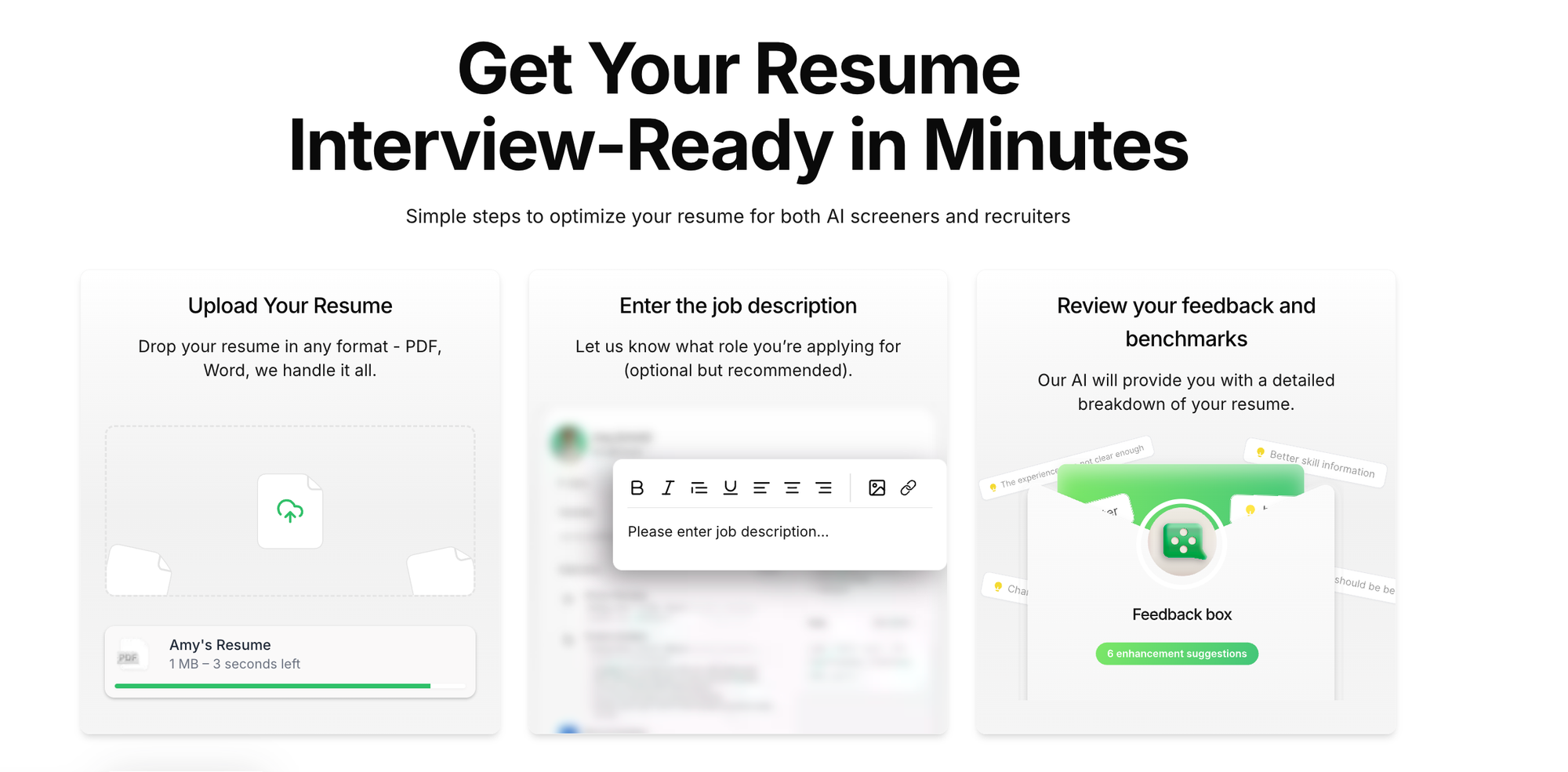If you’ve ever applied for a job and never heard back, there’s a good chance your resume never reached a human recruiter. The reason is something called an ATS. Short for Applicant Tracking System, ATS software is now used by almost every mid-sized and large company. It sorts, filters, and rejects resumes before a recruiter sees them.
For job seekers, understanding ATS is no longer optional. It’s the difference between being invisible and getting an interview call. Let’s break down what ATS is, how it works, and how you can make sure your resume doesn’t get trapped.
What Is an ATS?
An Applicant Tracking System is software that manages the hiring process. Companies use it to:
- Collect job applications in one place.
- Scan resumes for keywords and required skills.
- Rank candidates against the job description.
- Filter out applicants who don’t meet the criteria.
Recruiters rely on ATS because they receive hundreds, sometimes thousands, of applications for a single role. Instead of manually reading every resume, they let the system narrow the pile. Only the top-ranked resumes get passed on.
What Is an ATS?
An Applicant Tracking System is software that manages the hiring process. Companies use it to:
- Collect job applications in one place.
- Scan resumes for keywords and required skills.
- Rank candidates against the job description.
- Filter out applicants who don’t meet the criteria.
Recruiters rely on ATS because they receive hundreds, sometimes thousands, of applications for a single role. Instead of manually reading every resume, they let the system narrow the pile. Only the top-ranked resumes get passed on.

Why Do Resumes Fail in ATS?
The most common reasons are:
- Formatting Issues: Tables, columns, or images confuse the parser.
- Missing Keywords: You didn’t use the exact language from the job post.
- Generic Applications: Submitting the same resume to every job instead of tailoring it.
- Overloaded With Jargon: Fancy phrasing can hide the keywords the system is searching for.
In short, even highly qualified candidates can get screened out simply because their resumes aren’t optimized for ATS.
What Actually Works To Beat ATS?
Beating ATS doesn’t mean tricking the system. It means aligning your resume so it passes the filters and showcases your skills clearly. Here are some proven strategies:
- Use Simple Formatting
Stick to standard fonts, bullet points, and headings. Avoid graphics and text boxes. - Mirror the Job Description
If the posting says “data analysis,” don’t just write “analyzing data.” Use the exact phrase. - Customize Every Resume
Even small changes to align with the role make a big difference. - Highlight Core Skills and Results
ATS loves keywords, but recruiters still want to see achievements once they read it.
How Our Resume Reviewer Helps You Beat ATS
This is where tools designed specifically for ATS come in handy. Our Resume Reviewer was built with one purpose in mind: making sure your resume gets through the filters.
Here’s how it works:
- ATS Simulation
The tool scans your resume the way an ATS would, flagging formatting issues that could block parsing. - Keyword Matching
It compares your resume directly against the job description you’re applying for. Missing keywords? It shows you exactly where. - Actionable Edits
Instead of vague tips, it tells you how to restructure sentences and sections so the ATS recognizes them. - Tailored for Each Role
You can upload multiple job descriptions and see how your resume performs for each one, ensuring you’re never sending a “one size fits all” application.
By the time you submit, you’re confident your resume isn’t being filtered out for the wrong reasons.
ATS Is Only the First Step
Beating ATS is critical, but it’s not the end of the journey. Once your resume gets through, you still need to impress in interviews. That’s where our other tools, like the Interview Question Bank and Interview Copilot, come into play. Together they cover the full hiring funnel.
Think of ATS optimization as the ticket to the interview room. Without it, you’ll never get to show your skills. With it, you finally have the chance to compete.
The hiring process has changed, and ATS systems are here to stay. They save companies time but create frustration for candidates. The good news is that once you understand how ATS works, you can adapt.
A clean resume format, the right keywords, and tailored applications give you a far better chance of reaching a recruiter. And with our tools like Resume Reviewer, you don’t have to guess. You can test your resume before submitting and fix the gaps that would have held you back.
So the next time you apply for a role, ask yourself: Will my resume beat ATS? If the answer isn’t clear, it’s time to run it through a tool designed to make sure it does.


